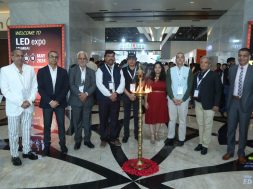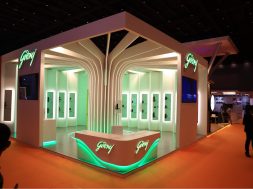Automation vs Optimisation [August 2012]
“One machine can do the work of 50 ordinary men but no machine can do the work of one extraordinary man”
Machinery companies are often accused of wanting to sell bigger machines, bigger capacities or some machines without actual need. It is important to determine the right capacity. In Europe, it is easier as the most common window is a single shutter tilt and turn window. The tilt and turn window has number of locking points and requires machining at fixed points depending on the size so it is easier to determine the machining time and assembly time. For UPVC window production welding time determines the production time for the window. In India, however, the types of windows are different from Europe so determining the capacity isn’t very easy. But the biggest challenge for fabricators is not automation but optimal usage of existing machinery and manpower.
In the last issue I mentioned that lot of companies have excess manpower. For example several companies have three people at the Double Head Mitre Saw, one operator and 2 helpers. In most companies, the profiles are transported manually from the store and placed on the floor in front of the machine. After cutting, the profiles are stacked next to it and then shifted to the next machine manually. Each machine has more than one person. In some companies 4 people are at the double head welding machine, one operator and 3 helpers as the machine’s supporting arms are not extendable. Therefore there are 2 people holding the frame and 2 people to weld on either of the heads. The process can be carried out with an additional stand with wheels to support the frame.
Rising costs of manpower paves way for automation. Automation doesn’t necessarily mean full CNC machines. To move from manual hand saws to single head cutting machines is also automation. But using the saw effectively or optimally is most important. If a company invests in the latest machines but production is not controlled or quality is not improved then it doesn’t make sense. Automation and optimisation should go hand in hand. One needs to study the existing process, optimise the process, automate the process, optimise again, upgrade the automation, optimise again – it’s a continuous process.
Investing on the latest CNC machines will not help in achieving the desired production. Henry Ford was a pioneer in Assembly Line. Toyota took it several steps ahead. Today automobile sector leads most manufacturing systems. A simple aluminium window production needs four machines; cutting machine, copy router, end milling machine and corner crimping machine.
In some cases die-cast corner cleats are used. So punching is required and generally sliding systems in India are without crimping option as the glass has to be inserted between the profile and not with a glazing bead/clip.
It is possible to do a simple single shutter window or 2 track 2 shutter windows with corner cleats in around 20 mins. That makes it 3 windows an hour, 24 windows in an 8 hour shift, 144 windows in 6 days, 576 windows a month, 6,912 windows a year. Most companies would have nearly 10 people to produce these many windows. It is possible to reduce or optimise the manpower.
For producing European system 2 track 2 shutter sliding windows after cutting most operations are done on the punching machine. A ball park figure of capacity for a cutting machine is 3 cuts per min. Therefore it is required to cut 8 times for frame and 16 times for shutter. With a capacity of 3 cuts per min one should be able to finish the cutting of the 24 windows in around 3 hours and 20 mins. So operator of the cutting machine will be free post lunch. If the profiles are neatly labled and stacked on a profile transportation trolley then it can be moved together to the next station or machine, in this case the punching.
Punching operation is very simple and is mostly pneumatic. If the profiles are neatly stacked in a trolley next to a punching station, even a woman operator can do the punching. Normally the window profile is around 1.5 kg per m. So a 2 metre profile cut profile would be around 3 kgs which can be easily handled by a lady. Moreover she can do it in a sitting position. After the machining comes the assembly. Let’s take the automobile example further and split the operation; frame and shutter. If the frames and shutters are marked after cutting as per the window size and stacked separately then they can be punched and again stacked in separate trolleys.
The assembly line comprises of frame line in which 4 sides of the frames are brought to the assembly table. Corner cleats are inserted, locked, checked in about 3 minutes. After the assembly, the frames are stacked according to the window sizes in a frame transportation trolley to be wheeled to the next station which is final assembly or marriage of frame and shutter.
The shutter line involves 3 steps inserting weather strips or woolpyle into the shutter profiles before assembly, insertion of rollers on the bottom profile and handles on the side profiles and fixing the glass supports. The glass supports, handles, rollers need to be in boxes below the assembly table or in racks or boxes above the assembly table. Insertion of gaskets, rollers, glass supports and other articles can be done by ladies. Further assembling 3 sides of the shutter is done, then the glass and the 4th side of the shutter is inserted. The glasses need to be precut and brought to the sash assembly station in trolleys with proper marking.
For 2 shutter lines and 2 track sliders, 2 people can produce shutters in 5 minutes. The European sliding systems are easier to assemble and take less than a minute. Drainage caps and interlock caps can be fixed at this station.
By breaking up the operation and using simple trolleys it is possible to achieve speed, efficiency and proper work flow. The materials need not be stacked at various places and the project based material can be stacked at the time of release of BOM to the shop floor making the shop floor clutter free. In Europe, a number of mom and pop fabrication houses exist where the father, wife, daughter and son manage the entire window business. This helps to keep the costs low and most importantly the money within the family.
In PVC too similar break up is possible. Some of the biggest installations are present in Eastern Europe for fully automated plants for production of UPVC windows. One such plant has a capacity of producing 4000 windows every day. As part of our marketing campaign, we shot a video of an automated plant in Slovakia (link to the video http://tinyurl.com/cx87xnf). The most interesting feature of the video we found was surprisingly the assembly line and not the huge Elumatec SBZ 620 or the horizontal 4 head welder and CNC corner cleaner, assembly of the frames and shutters at different stations. It further used the Eprod and Econtrol versions of Klaes software for efficient functioning. I am sure you would also agree with the assembly line. Do write to me about your opinions or views at s.kumar@elumatecindia.comn
7
Cookie Consent
We use cookies to personalize your experience. By continuing to visit this website you agree to our Terms & Conditions, Privacy Policy and Cookie Policy.






